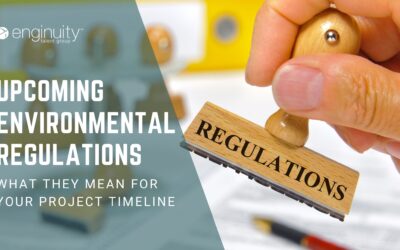For decades, PFAS were celebrated for their utility in manufacturing, consumer products, and industrial applications. Resistant to heat, water, and oil, they earned the nickname “forever chemicals” because of their remarkable persistence in the environment. Today, that persistence has transformed them from a commercial asset into a global environmental challenge.
In response, federal and state governments are rolling out a new wave of PFAS regulations that will fundamentally reshape the landscape of environmental work. For professionals in remediation, water treatment, and compliance, the next decade will bring both technical challenges and unprecedented opportunities for innovation. Understanding the implications of these regulations is no longer optional, it is essential for anyone shaping the future of environmental practice.
The Regulatory Shift:
From Advisory to Enforceable Standards
For years, PFAS guidelines existed largely as health advisories. That has changed. With the U.S. Environmental Protection Agency (EPA) setting enforceable drinking water standards and expanding the list of PFAS compounds subject to monitoring, environmental projects are entering a new regulatory era.
This transition means that municipalities, utilities, and private industries are no longer able to rely on voluntary compliance or interim measures. Instead, projects must now incorporate rigorous monitoring, reporting, and treatment systems designed to meet strict federal and state thresholds. Similar regulatory momentum is building internationally, as the European Union advances its own PFAS restrictions under REACH (Registration, Evaluation, Authorization, and Restriction of Chemicals).
The Technical Challenges of PFAS Remediation
Unlike many contaminants, PFAS present unique difficulties in detection and removal. Their chemical stability makes them resistant to traditional treatment methods such as activated carbon or conventional oxidation. As a result, environmental engineers and scientists are investing in advanced technologies, including:
- High-pressure membrane systems (e.g., reverse osmosis) for water treatment.
- Novel sorbents and ion-exchange resins tailored to capture PFAS compounds.
- Thermal and plasma-based destruction technologies to permanently break down PFAS molecules.
- In-situ remediation strategies, including stabilization and containment approaches for contaminated soils and groundwater.
Over the next decade, environmental projects will increasingly blend these advanced methods with adaptive management frameworks, requiring firms to not only implement treatment but also continuously validate performance against evolving standards.
Economic and Legal Implications for Projects
The financial implications of PFAS regulation are significant. Utilities and industries must prepare for capital investments in advanced treatment infrastructure, long-term monitoring, and potential litigation tied to legacy contamination. Many municipalities are already exploring federal and state funding sources to offset compliance costs, while private companies are assessing liability exposure and risk management strategies.
For project stakeholders, the ability to balance compliance, cost, and operational continuity will be critical. Environmental firms that can navigate this intersection, delivering technically sound, cost-effective solutions while helping clients manage legal and reputational risks will be positioned as indispensable partners.
A Decade of Opportunity for
Environmental Innovation
While the challenges are immense, the regulatory push on PFAS is also accelerating innovation in the environmental sector. Universities, startups, and engineering firms are investing heavily in R&D, advancing new materials and processes that may one day deliver scalable, energy-efficient PFAS destruction.
We can also expect to see increased integration of digital tools such as real-time water quality monitoring, predictive modeling, and AI-driven optimization of treatment systems. These technologies will transform projects from static compliance exercises into dynamic systems capable of adapting to changing regulatory and environmental conditions.
What the Future of PFAS Projects Will Look Like
Looking ahead, environmental projects in the PFAS era will be defined by several key trends:
- Holistic Life-Cycle Management – From source identification to end-of-life treatment, projects will focus on long-term containment and destruction strategies rather than temporary mitigation.
- Cross-Sector Collaboration – Architects, engineers, scientists, and policymakers will need to work in tandem to develop resilient infrastructure capable of addressing PFAS contamination at scale.
- Community-Centered Solutions – With PFAS directly affecting public health, community engagement and transparency will become integral to project success.
- Adaptive Compliance Models – As regulations continue to tighten, projects must be designed with flexibility to accommodate future standards without requiring full system overhauls.
Conclusion: A Defining Decade for
Environmental Practice
PFAS regulations are not just another layer of compliance, they represent a paradigm shift in environmental work. Over the next decade, projects will require deeper technical expertise, more robust monitoring, and a proactive stance on innovation and risk management.
For firms operating at the intersection of science, policy, and design, this is a pivotal moment. Those who can deliver forward-thinking PFAS strategies will not only meet regulatory demands but also play a defining role in shaping a healthier, more resilient environment for generations to come.





0 Comments